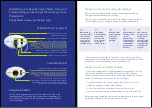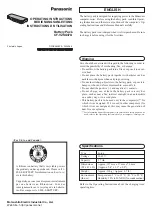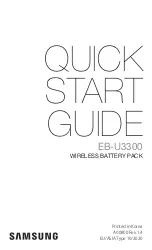
Welcome to your bp pulse home charger. Here you’ll
find everything you need to get the most out of your
charging unit.
Check below to see your charger type:
Tethered (Type 1 or Type 2)
Socketed (Type 2)
Charger Installation
Your bp home pulse charger should be installed as outlined in the
installation guide. This can be found online at www.bppulse.co.uk
Your installer will explain how the unit has been installed and how
to start charging.
Cable: when not in use, keep it
wrapped around the unit
Docking socket for the connector
Multi-function LEDs (visible when powered):
Multi-function LEDs (visible when powered):
Top:
Amber
indicates the unit is ready to deliver a charge
Top:
Amber
indicates the unit is ready to deliver a charge
Middle:
Green
indicates that a charge is being delivered
Middle:
Green
indicates that a charge is being delivered
Bottom:
Red
indicates that a fault may be present
Bottom:
Red
indicates that a fault may be present
On/Off key switch – use quarter turns to operate
Key can be removed in both the ‘On’ and ‘Off’ positions
Charging cable with connector
The Type 2 socket is located under the flap.
Lift the flap to access the socket and plug the connecter
from the electric vehicle into the socket. Always make
sure the cable is fully inserted into the socket
Taking care of your bp home pulse charger
Before using your bp home pulse charger, please read the following
charging instructions and safety warnings.
The charger is connected to your home’s mains electricity, so always be
careful whenever you’re using and storing the various components.
Taking care of your tethered cables
If your home charger has an integrated tethered charging cable, it’s vital
that you take good care of the cable and connector. Don’t drop the
connector, and make sure you store the cable neatly around the unit and
place it in the docking socket when you are not using it
•
To store the cable, wind it loosely around the body of the unit in a
clockwise direction, starting at the fixed end
•
Don’t wind the cable too tightly and be careful not to twist it
•
Stow the connector into the docking location on the front of the unit
If there is any sign of damage to the unit or it looks unsafe in any way,
power it down immediately and contact our customer care team on 0330
0165126 or visit the contact page at www.bppulse.co.uk
Before starting a charge and connecting the tethered cable to your vehicle,
make sure the cable is fully unwound and not twisted.
Don’t touch or
insert any object
into the unit’s
connector pins
or the pins on
your vehicle’s
charging socket
Don’t tamper
with or attempt
to open the
connector box
below the unit
or the cable
feeding the unit
Don’t use cables
if they are frayed
or the outer
insulation is
damaged
Don’t attempt to
service or repair
the unit.
Dismantling it
or breaking the
security seals
will invalidate
your product’s
warranty
Don’t use the
bp home pulse
charger if the
connector,
socket or cable
show any signs
of being broken
or damaged in
any way























